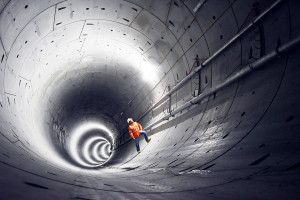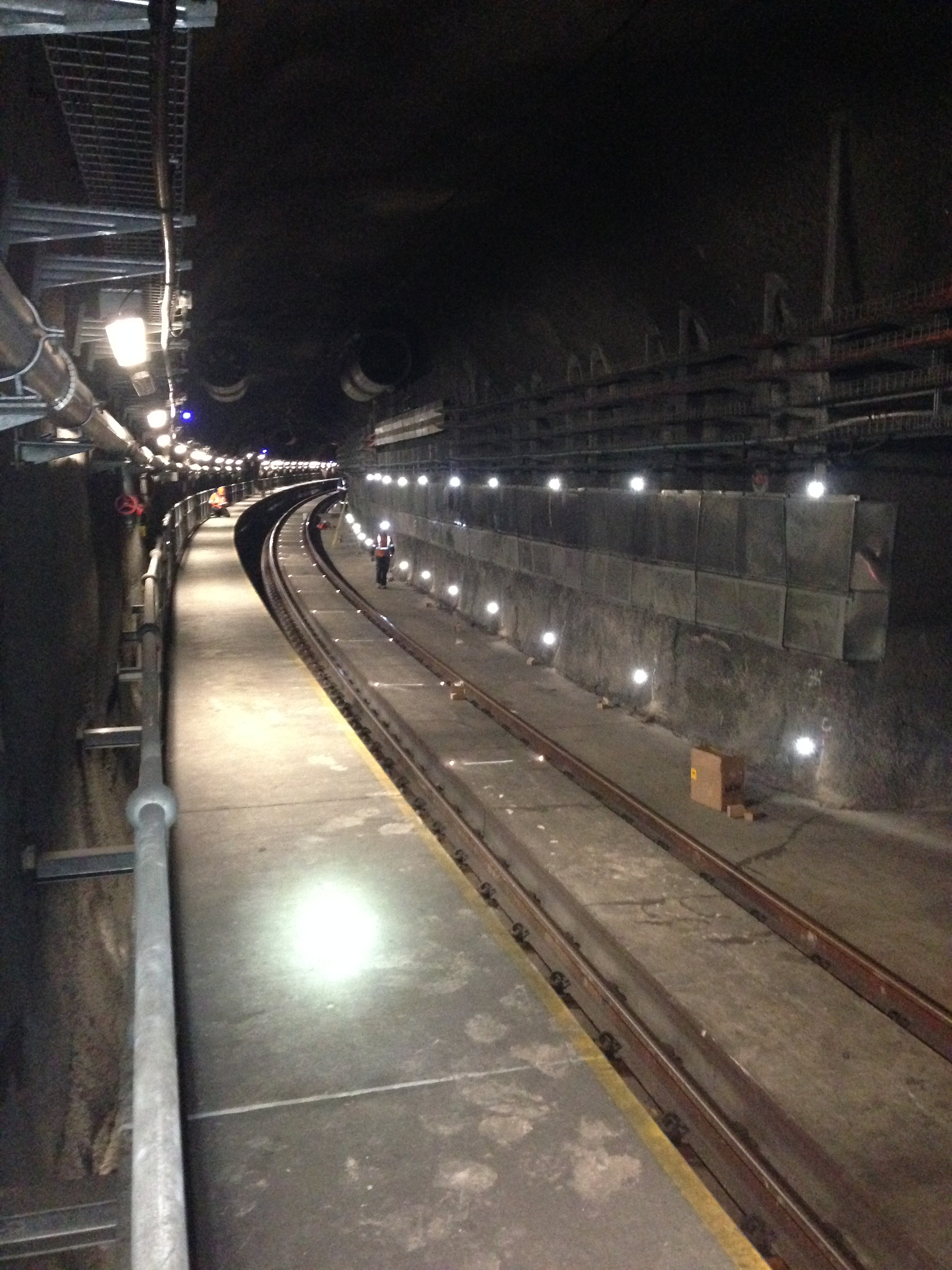VMT recently supplied the guidance systems for a microtunnelling project on Malta which was required as part of water treatment network scheme. The project was designated TP2816 Ghaxaq, Malta.
The microtunnelling works involved the installation of two pipelines each of ID 1,600 mm internal diameter. One pipeline was 1031.76 m long whilst the other was a little longer at 1138.57 m. Both pipelines were designed as straight bores which meant that no specialist guidance was required to handle in-built curves.
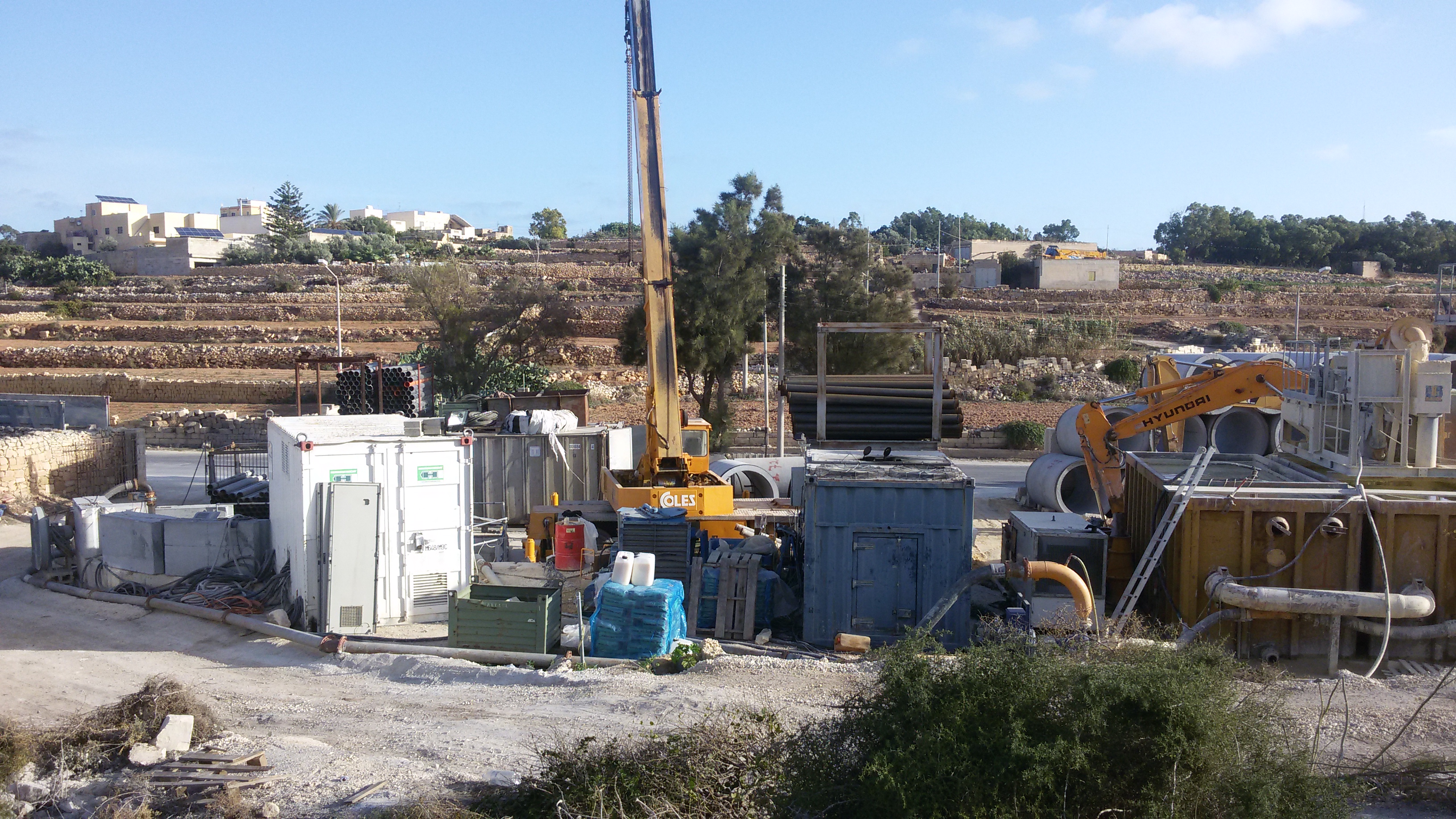 The drives were completed in the district of Zabbar West, between October 2015 and November 2016. Zabbar is located in the South East of Malta and it is Malta’s fourth largest town, with a population of around 17,100.
The drives were completed in the district of Zabbar West, between October 2015 and November 2016. Zabbar is located in the South East of Malta and it is Malta’s fourth largest town, with a population of around 17,100.
One of the major challenges for the project was that the ground comprised relatively soft rock and chalk which was quite porous at times and in places included huge cavities. This was at least in part why the project took some 13 months to complete. The difficult ground conditions meant that the Herrenknecht AVN 1600 microtunneller, fitted with a hardrock cutterhead, encountered some of these cavities which needed to be filled with concrete before tunnelling could continue. This happened once on the first drive and at least twice on the second.
For its part VMT provided the guidance system and a support team to the project. The guidance system used was the Universal Navigation System (U.N.S.) modular navigation system developed by VMT’s sister company Herrenknecht AG. VMT markets these systems for Herrenknecht in the international market.
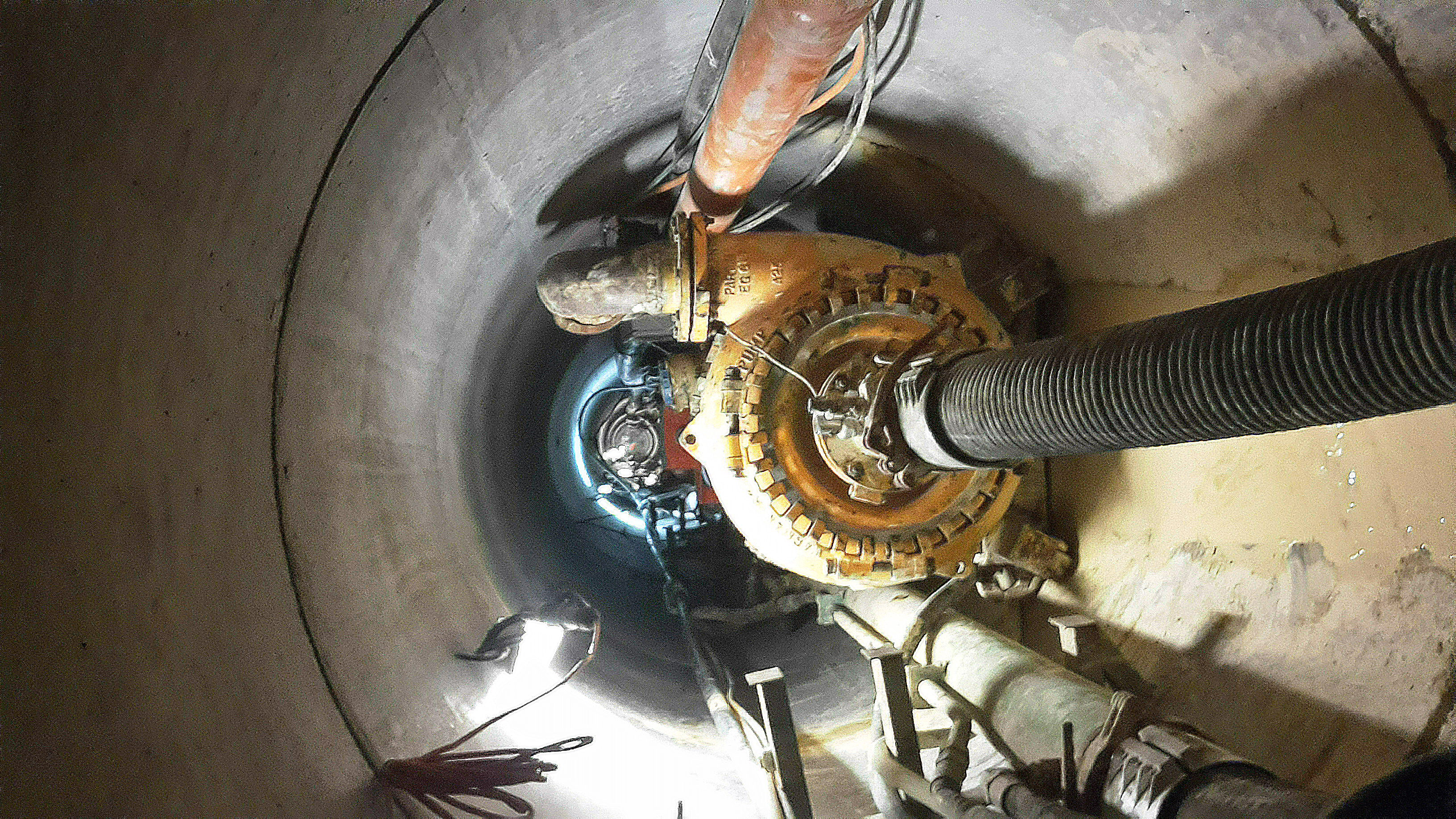 The U.N.S. system was specially designed for use on straight bore routes of up to 200 meters in length and utilises a laser that is installed in the drive launch shaft. The laser line maintains a direct ‘visual contact’ with the guidance target unit at the rear end of the TBM that allows the machine operator to monitor horizontal and vertical deviations from the predetermined target values and make the necessary steering corrections to maintain the required drive course.
The U.N.S. system was specially designed for use on straight bore routes of up to 200 meters in length and utilises a laser that is installed in the drive launch shaft. The laser line maintains a direct ‘visual contact’ with the guidance target unit at the rear end of the TBM that allows the machine operator to monitor horizontal and vertical deviations from the predetermined target values and make the necessary steering corrections to maintain the required drive course.
For longer drives such as those at Zabbar West, the navigation system can be extended using a reference module. To protect against refraction interference, an additional Hydraulic Water Levelling system (HWL) can be used to determine vertical deviation for longer, straight drives of up to 400 meters in length.
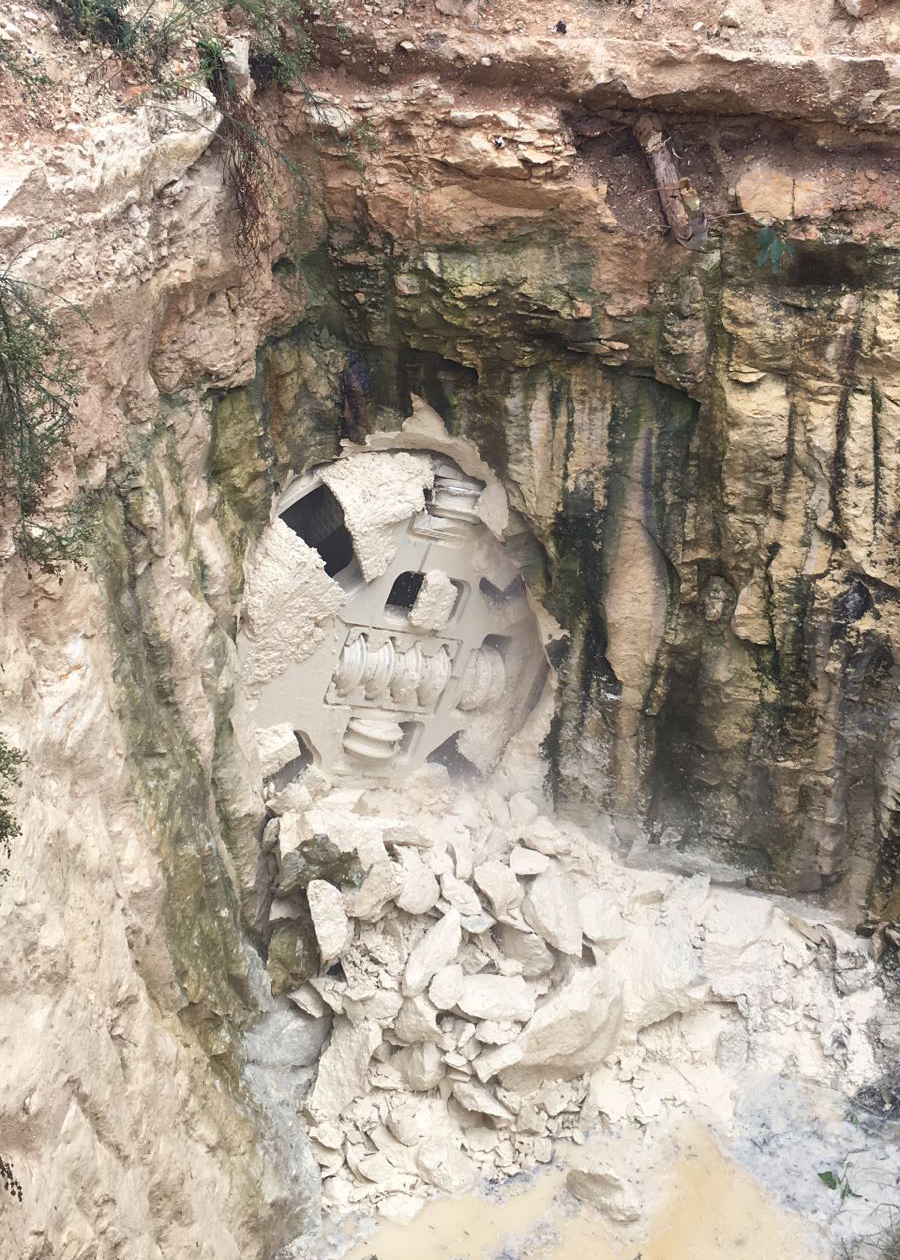 For even longer drives a north-seeking gyrocompass can be installed in the TBM, which does not require direct visual eye contact to the reference module in the launch shaft and makes it possible to master even longer distances, gradients and curves.
For even longer drives a north-seeking gyrocompass can be installed in the TBM, which does not require direct visual eye contact to the reference module in the launch shaft and makes it possible to master even longer distances, gradients and curves.
The VMT support team visited site to ensure that particularly for the first drive the machine crew were fully up to speed on the functionality of the guidance system, especially the HWL. They were also useful to the project given that whilst no particular problems occurred with the guidance system, the ground circumstances meant that drift calculations for the machine were challenging as it went through porous chalk and then just a few meters later through the harder rock.
Ultimately both drives were successfully completed to within the necessary target tolerances required by the client.
A new partnership between Germany-based tunnel navigation and deformation monitoring specialist VMT GmbH and the US and Netherlands-based Positioning Area of the Japanese Topcon group has recently led to the launch of a new deformation monitoring system.
Establishing the partnership, combining the skills, engineering prowess, hardware and software expertise of the two companies has brought about the development of the latest advanced deformation monitoring system known as Delta Solutions. The facility to fuse together each company’s respective products and technologies has provided customers with a complete monitoring solution, which will be distributed globally by Topcon.
Utilising as a base VMT’s existing TUnIS Deformation Monitoring software product and various items of hardware that operate with it, a process utilising further hardware components from Topcon as well as software elements including Delta Link, Delta Log, Delta Watch and Delta Sat has been developed. Delta Solutions is designed to provide accurate and reliable deformation monitoring measurements and the associated reporting requirements for asset protection.
Combining technology
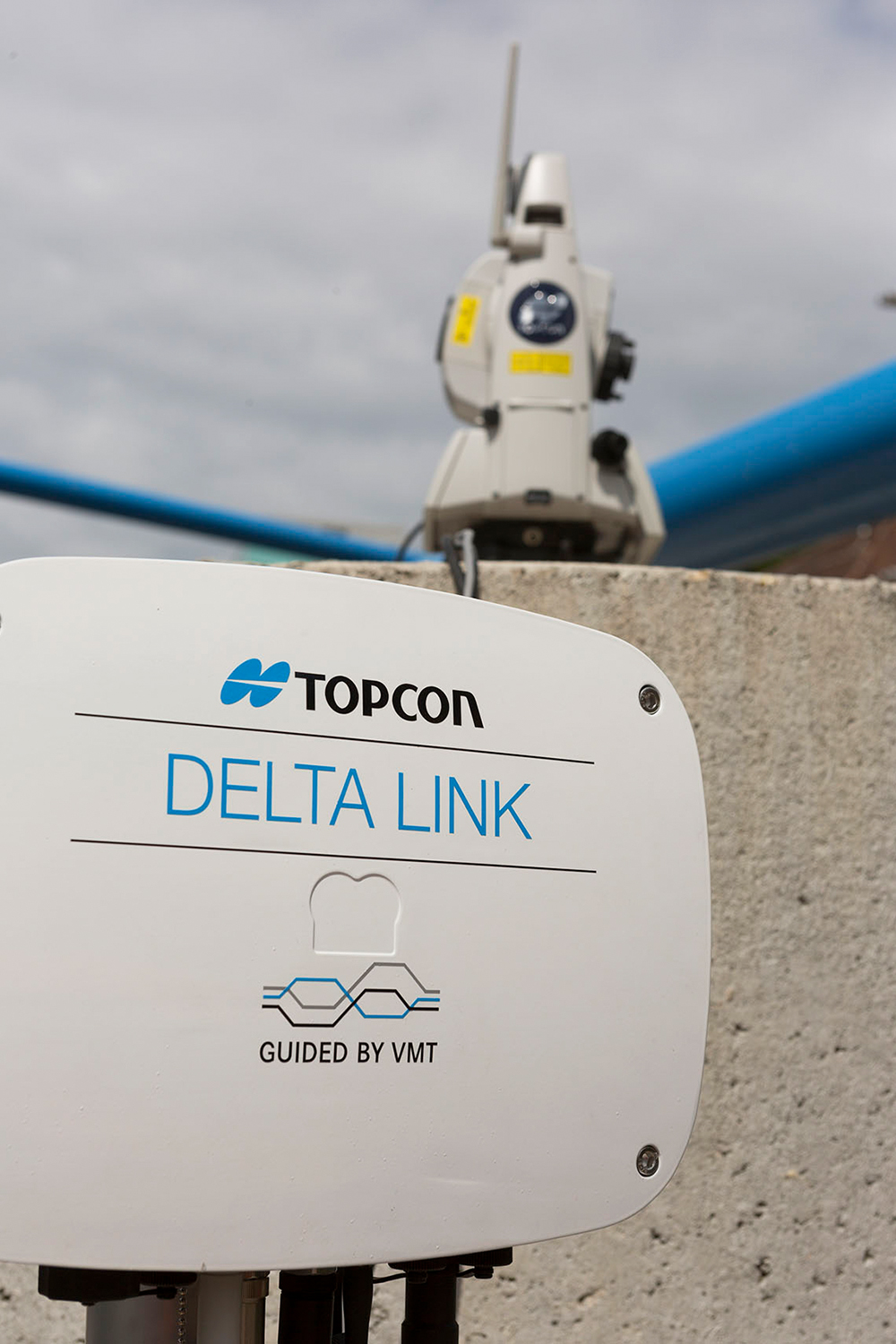 For its part, working alongside Topcon engineers, VMT undertook modifications and customisation to both existing hardware and software as well as the communications systems that operate within the monitoring process to meet the requirements of the new Delta System set out by Topcon.
For its part, working alongside Topcon engineers, VMT undertook modifications and customisation to both existing hardware and software as well as the communications systems that operate within the monitoring process to meet the requirements of the new Delta System set out by Topcon.
As well as this, VMT also undertook certification processes on certain hardware units that now mean that all hardware components meet with current CE and FCC certification conditions and electromagnetic emissions limits, which makes the Delta System compatible with many more countries operations regulations and requirements.
“As standalone software, Delta Watch delivers accurate and reliable data in a variety of reporting formats to best fit a project’s needs said Ian Stilgoe, vice president portfolio management at Topcon Positioning Group. “Data from the total station, GNSS receivers, levelling devices and sensors can be processed and analysed individually or as a network-adjusted solution. “Furthermore Topcon Delta Link provides hardware support communication for autonomous operation in the field.” he said. “Delta Link manages each individual power source, thereby maximising system availability.”
Communications options include Ethernet, Wi-Fi, and a globally approved integrated cellular modem and the system can be accessed via a secure web portal. Delta Log is designed to provide an intuitive interface to manage observations, target types, and measurement scheduling.
“We are pleased to be able to partner with Topcon to bring our deformation monitoring solutions to a wider customer base utilising Topcon’s global distribution network.” said Alexander Seilert, Head of Sales and Project at VMT GmbH.
We used this year’s Intergeo to inform visitors about trends and developments in the tunnel-building industry and within our company.
As previously at bauma, our appearance at Intergeo was characterized by the use of digital media, which allowed the VMT team to demonstrate and explain the focus products in our current portfolio most effectively.
A further highlight was the presentation of Delta Solutions, a product innovation which was developed within the scope of the cooperation between VMT and the Japanese Topcon group and presented at Intergeo, both on the Topcon booth and within special information events. Here, delegates were provided with comprehensive information about the system solution along with its various modules and their functions.
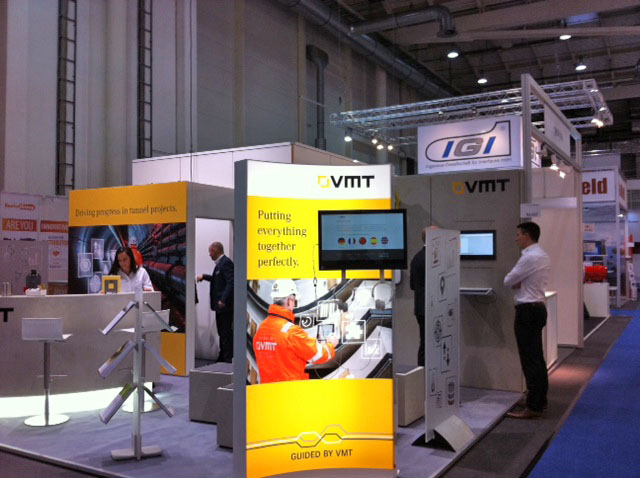 Delta Solutions is a deformation monitoring system consisting of software and hardware components. It delivers accurate and reliable monitoring measurements combined with meaningful reports to protect and safeguard people and buildings during building operations.
Delta Solutions is a deformation monitoring system consisting of software and hardware components. It delivers accurate and reliable monitoring measurements combined with meaningful reports to protect and safeguard people and buildings during building operations.
With an ever-increasing population the northwest district of Sydney is currently believed to be the region with the highest car ownership density per household in Australia. It is expected that over the next few decades somewhere around 200,000 extra residents will arrive in the area taking the population to over 600,000, or over half as much again as the size of the national capital city, Canberra (population around 380,000).
In order to try to alleviate pressures on the regions road networks and ensure, for the first time, a reliable public transport service, the local authorities are currently in the construction phase of the Sydney Metro Northwest project.
Sydney Metro Northwest will be the first fully-automated metro rail system in Australia. It is currently on track to open to customers in the first half of 2019. Sydney Metro Northwest will deliver eight new railway stations and 4,000 commuter car parking spaces to Sydney’s growing North West area. Trains will operate every four minutes at peak times with at least 15 trains an hour as a ‘turn up and go’ service.
Construction
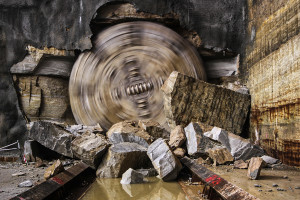 The construction contract was awarded in late June 2013 to the Thiess John Holland Dragados (TJHD) joint venture. The project includes the construction of twin 15 km long tunnels from Bella Vista to Epping which will be, once completed, Australia’s longest rail tunnels. On average, the tunnels are 29 metres deep, and at the deepest point 58 metres. The internal lined tunnel diameter will be 6 metres. In total four TBMs have been excavating the tunnel alignments. TBM1 ‘Elizabeth’ and TBM2 ‘Florence’ were launched from Bella Vista and are boring 9 km to Cherrybrook. TBM3 ‘Isabelle’ and TBM4 ‘Maria’ were launched from Cherrybrook and are boring 6 km to Epping. An interesting aside is that this is the first project in Australia to use four TBMs simultaneously.
The construction contract was awarded in late June 2013 to the Thiess John Holland Dragados (TJHD) joint venture. The project includes the construction of twin 15 km long tunnels from Bella Vista to Epping which will be, once completed, Australia’s longest rail tunnels. On average, the tunnels are 29 metres deep, and at the deepest point 58 metres. The internal lined tunnel diameter will be 6 metres. In total four TBMs have been excavating the tunnel alignments. TBM1 ‘Elizabeth’ and TBM2 ‘Florence’ were launched from Bella Vista and are boring 9 km to Cherrybrook. TBM3 ‘Isabelle’ and TBM4 ‘Maria’ were launched from Cherrybrook and are boring 6 km to Epping. An interesting aside is that this is the first project in Australia to use four TBMs simultaneously.
Tunnelling work sites were established at Bella Vista, Showground and Cherrybrook. Each of the three sites included support services such as power, fresh air ventilation, spoil (crushed rock) handling systems and a cement grout mixing plant. Ground conditions along the route comprise about 60% Sydney sandstone with the remainder being shale.
Whilst the TBMs were utilised for the majority of the main tunnelling work (now complete), road header machines are being used to excavate short sections of tunnel, such as linking the new TBM tunnels with existing Epping to Chatswood tunnels and caverns to allow trains to cross from one track to another.
Support Production
Whilst directional control and accuracy of the TBMs was a vital part of the construction project, there was also a need for precise operation throughout the manufacture and supply of tunnel lining segments.
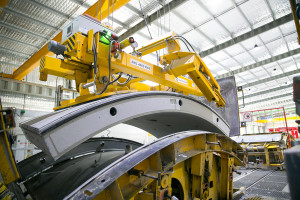 First the correct segments had to be manufactured and then delivered to the right TBM at the right time to ensure smooth uninterrupted progress of all TBM’s through the ground. There was also a requirement that once installed, the tunnel lining at the Epping site had to be monitored to ensure that no post-installation deformation or tunnel movement outside of the pre-set limits of the contract were experienced.
First the correct segments had to be manufactured and then delivered to the right TBM at the right time to ensure smooth uninterrupted progress of all TBM’s through the ground. There was also a requirement that once installed, the tunnel lining at the Epping site had to be monitored to ensure that no post-installation deformation or tunnel movement outside of the pre-set limits of the contract were experienced.
According to Jeremy Glasgow, Project Manager for the Kellyville Precast Facility where all the tunnel lining segments were manufactured: “The original thinking was that we needed to streamline our [segment manufacturing and handling] process and remove the opportunity for human error as much as possible. With the volume of segments to be produced (a total of 98,244 over the whole project) it was worth looking into systems that could not only remove human error but remove actual work required to be undertaken by individuals.”
Having researched the potential systems available on the market the pre-cast team noted that whilst there were alternative solutions around, at the time there was nothing that appeared to encompass the whole of operation in the same way as did the Segment Documentation System (SDS) system from VMT. Not only did the SDS system offer an effective way of removing human error and human functions from the production and delivery operation, it also met a requirement from the client where certain data needed to be submitted throughout the process. It was decided to run the operations using the SDS system.
What was not fully appreciated at the outset of the segment production process was just how complicated the operation was to become given the project scale, with multiple yards and sites as well as two production carousels.
To maintain high levels of quality assurance the SDS system is designed with significant levels of data protection to ensure only those with authorisation have the necessary access. However the full range and number of personnel requiring access to project data was not fully appreciated at the outset, so the initial set-up of the SDS network did not allow fully different aspects of the process to interface as well as they might. It was agreed that had this requirement been understood at the development stage it could have been allowed for in the initial design and would not have caused the subsequent additional workload. Through close cooperation the contractor and the VMT team overcame these obstacles very well.
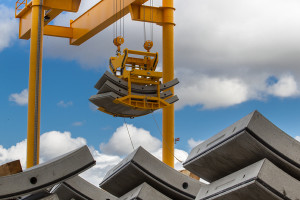 According to Matt Jarvis of VMT TG: “This project showed us how challenging it can be to pre-empt how a system needs to work on a site as complex as this and how important it is to involve the right people and ask the right questions before you start. This project also shows that VMT does not simply sell a system and walk away. Once the initial difficulties were overcome the SDS system did its job very well. We, both the contractor and VMT’s team, can be proud of our efforts to ensure the Sydney Metro Northwest met its targets in terms of segment production and installation during the tunnel advance.”
According to Matt Jarvis of VMT TG: “This project showed us how challenging it can be to pre-empt how a system needs to work on a site as complex as this and how important it is to involve the right people and ask the right questions before you start. This project also shows that VMT does not simply sell a system and walk away. Once the initial difficulties were overcome the SDS system did its job very well. We, both the contractor and VMT’s team, can be proud of our efforts to ensure the Sydney Metro Northwest met its targets in terms of segment production and installation during the tunnel advance.”
For VMT GmbH, Manfred Messing, Managing Director said: “The Sydney Metro Northwest project was one of those that, despite many years of experience in the various aspects of the tunnelling industry, still managed to teach us all some very interesting and for future works important lessons in terms of network connectivity and accessibility in relation to the relatively new SDS system. The fact that in the end our system gave to the contractor what they needed highlights both its flexibility across a range of project complexities and our team’s ability to adapt the system when required.”
Learn more about the SDS system please watch the new product video at: sds.vmt-gmbh.de
Team work wins the day
Referring to the operations of the SDS system on site Jeremy Glasgow said: “The process of software selection and initial installation was very good. The support throughout the project was also very good generally, however due to some connectivity issues there was frustration on both sides. It is fair to say that the SDS system was setup on a strong quality assurance bias. The SDS system can be configured to any requirements but it must be ensured that the key desired interfaces are discussed early in the planning phase to enable cooperation and configuration.”
Despite the necessity to modify the initial set-up, ultimately the client was very pleased with the outcomes provided by the SDS system. When ask if the VMT SDS system could be recommended for future projects Jeremy Glagow’s response was: “Yes definitely.”
Deformation Monitoring
For tunnel Deformation Monitoring at the Epping Site, TJHD utilised an in-house software solution for viewing and reporting data. However, to obtain the data in the field they wanted a simple automated hardware solution.
Dr Sascha Schneid, Product Management, VMT GmbH developed a TUnIS.deformation ‘light’ concept utilising the TUnIS Deformation Monitoring software system supplied by VMT. The set-up used a TM30 Total station which showcased the benefits of quality instrumentation, a control box and a hosted web server.
Deformation monitoring at Epping helps to evaluate and assess geometric changes in the tunnel structure, although the system can be utilised for a variety of monitoring applications. Sensors are installed within the area of influence and their measured values are continuously analysed. When and if critical changes occur, warnings and alarm messages (email, SMS message etc.) are automatically sent to personnel responsible for checking the site to enable immediate action to be taken. At Epping, Prisms are installed on the tunnel structure and monitored using the TUnIS system to detect any movement within. Processed data is exported in CSV format to the customer’s FTP server for full analysis. For the Sydney Northwest tunnel Epping site, deformation monitoring will resume later in 2016.
In addition to the system itself, VMT provided ‘Quality Control and Maintenance’ which includes at minimum, a weekly report on the system status. This assures the customer the system is working correctly. VMT identifies any errors or shortfall in the monitoring system accuracy, enabling the project team to act quickly.
Ultimately the system provided a low cost, low maintenance and high performance concept that fulfilled all the customer requirements.
Visit us at Intergeo Hamburg, the world’s leading conference trade fair for geodesy, geoinformation and land management.
The exhibition will take place from 11 – 13 October 2016 in Hamburg. At our stand (hall A3, no. B3.037) we will inform you about all special fields.
With over half a million event website users and over 16,000 visitors from 92 countries at Intergeo itself, it is one of the key platforms for industry dialogue around the world.
See more information on the Intergeo Website
We are looking forward to your visit!

